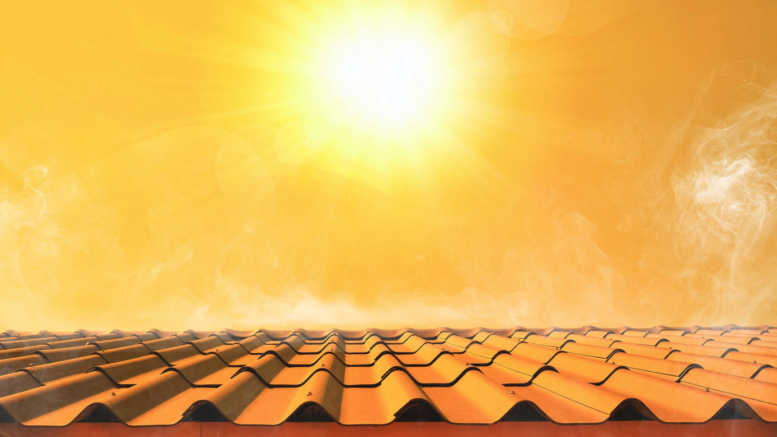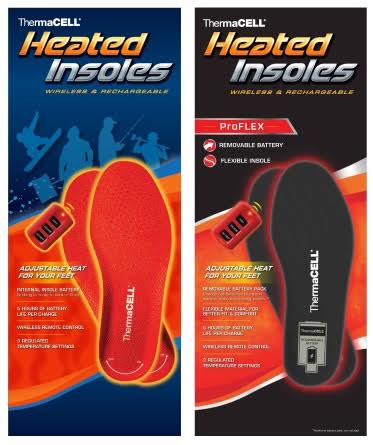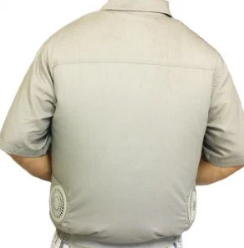It’s summer and the roofing business is sizzling. Unfortunately, so are the rooftops. In many areas of the country, heat is a very real job hazard to be expected and planned for.
All roofs absorb the sun’s heat; some more than others. Each type presents its own challenges to roofing professionals. For example, dark asphalt shingles will get hot faster than light colored ones. Metal and tile roofs, while well suited to hotter climates, still can present dangers when roofers are working on them in the sun. No matter which type of roof you’re working on, the heat of the day can have an effect on crews and work plans.
While hot weather is a relative term depending on geography, most experts will agree that roof work in weather above an actual air temperature of 90 degrees Fahrenheit is a cause for concern. In many places, an air temperature of 90 degrees translates to a “real feel” temperature that is much higher, depending on humidity, wind, and tree cover.
So, what’s the best solution when the sun climbs high in July and August? As usual, the answer lies in planning, setting procedures, and then following them.
You Can’t Stop the Heat
The time to plan for hot days is when it’s cold. In the slower, cooler season, make sure that supervisors and crews are trained to prevent heat emergencies on the job. When the busy season and hot weather arrive together, all you need to do is send a reminder and quick summary of training points. Newbies to the roofing business must be thoroughly trained when they join the team.
Be sure that both workers and crew chiefs are ready to recognize and take steps to prevent:
• Burns: Equipment and materials including bundles of shingles will get hot if left in the sun. Store equipment in the shade whenever possible. Canopy-style tents are useful for this purpose as well as for worker rest breaks. Treat skin burns from hot equipment or materials promptly with cool water and/or burn gel so blisters don’t form. Make sure that work gloves are available and are being used regularly — not as an afterthought. Sunscreen is not just for the beach. Encourage workers to use sunblock products and clothing. Light colored, lightweight attire is best and hats with a full brim are a must when helmets are not called for.
• Heat fatigue: Well before symptoms of heat exhaustion set in, fatigue can be a warning sign and can take a toll on productivity. Studies show that workers across all industries are more prone to mistakes in judgment when exposed to climbing temperatures. To prevent costly mistakes, supervisors must watch for signs of waning energy, dropped tools, or impaired thinking. Again, pay special attention to new team members and watch for signs of heat-related problems.
• Heat exhaustion/heat stroke: Workers must take regular shade breaks when working in the heat, even if not in direct sunlight. Hydration is essential. Make cold water and ice available throughout the day. Discourage sweet sodas and forbid alcohol on the job. Sports drinks can be very useful in replenishing electrolytes lost to sweating but water should be the main component of proper hydration. Health professionals recommend one cup (8 ounces) of water every 15-20 minutes.
Prevention is the key that keeps crews functioning throughout a day, week, or season of hot work days. Studies show that it actually takes more energy to cool the body than to keep it warm. Scientists note that workers in climates that are continuously hot become acclimated to the temperature. Problems are more likely to arise when temperatures change rapidly. Heat acclimated workers can be more prone to mistakes when temperatures drop and temperate-zone workers experience problems with unexpected hot days. However, it is important to note that prolonged hot days, particularly with high humidity, are dangerous for all workers.
Too Hot To Handle
While each company or each job supervisor must decide when it is simply too dangerous to work on a roof, protocols and guidelines should be in place to prevent injuries or deaths on the job due to heat. Missed signals can lead to disastrous consequences. Knowing and acting upon the first signs of heat exhaustion or heat stroke can save lives. Here are the stages of heat-related illness:
1. Early signs of heat sickness include muscle or abdominal cramps. These are signs of dehydration and can indicate the beginning of an electrolyte imbalance. This is the time to drink cool water or a sports drink and rest in the shade.
2. Heat exhaustion occurs when the body is actively trying to cool itself by sweating but this natural cooling mechanism is not enough. Body temperature begins to rise and skin can feel clammy. Breathing and heart rates are elevated. The worker may feel lightheaded and/or nauseous. Remove the worker to a cool area or air-conditioned truck and insist on cool fluids, sipped slowly. Do not cool the worker so quickly as to induce shivering. (Shivering produces more heat by contracting muscles.) Be sure the worker is alert, aware of surroundings, and can follow simple commands. If not, assume heat stroke has begun.
3. Heat stroke is the most serious and life-threatening of the heat related illnesses. One key sign to watch for is a loss of the ability to sweat. The worker’s skin will appear dry and will feel hot to the touch. The person may seem clumsy or confused but insist that they are “fine” and can keep working. This is a true medical emergency. Move this person to a cool place and have someone call 9-1-1 for an ambulance. If the worker is fully conscious, give water to drink. Never force liquids on a semi-conscious individual or someone lying flat. Start active cooling by applying cool wet cloths or ice packs to underarms and behind the knees and neck.
There are no shortcuts to safe summer roofing operations. Hot weather is not an excuse to shed hard hats or harnesses to keep cool. Steep residential roofs are dangerous any time of the year but more so in hot, steamy weather. Plan each ascent with care and look forward to a profitable summer season when you’ll never have to say: It’s too darn hot.
About the author: Brandon Strawder is CEO of Strawder Family Innovations, manufacturer of The RidgePro, the premium device in steep-slope roofing safety. The company’s mission is to dramatically reduce the number of injuries and fatalities in the roofing industry. For more information, visit theridgepro.com.





Be the first to comment on "Training and Preparation Are the Key to Preventing Heat-Related Hazards"